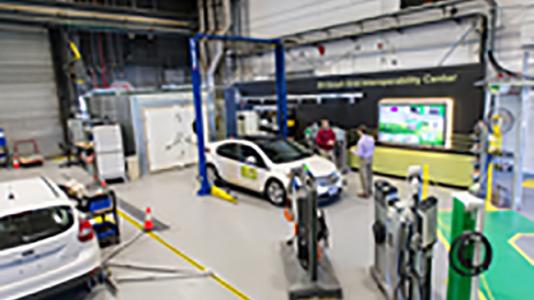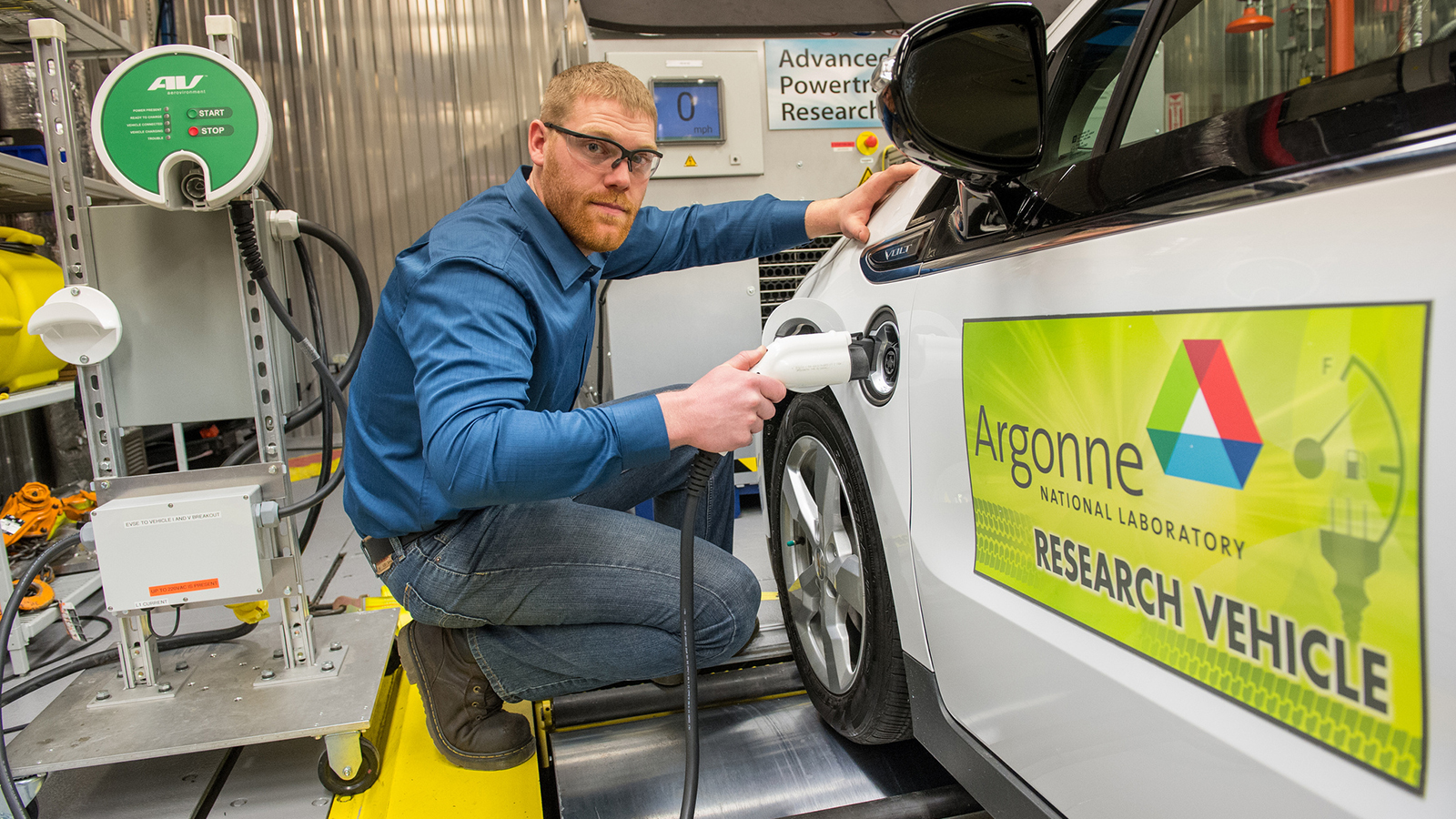
If you can’t find a charging cable for your cell phone, it’s an inconvenience. But what if you’re away from home and can’t find a charging station compatible with your electric vehicle?
Over the last few years, many cell phone ports have been standardized so a large portion of chargers are interchangeable, but right now, there aren’t any equivalent standards for electric vehicle charging stations. This May, Argonne National Laboratory opened the Electric Vehicle Interoperability Center to help solve this problem. The goal of this state-of-the-art facility, in collaboration with the European Commission’s Joint Research Centre, is to help ensure that any electric vehicle can safely charge anywhere, anytime.
Jason Harper, who has been involved in Argonne’s research on plug-in electric vehicles for several years, explains that the collaboration benefits everyone. “Argonne has literally written the standard for testing plug-in electric vehicle and charging station interoperability,” he said, “and the Joint Research Centre brings to the table an expansive experience with smart grid simulations and demonstration projects.”
Since charging rate, the type of current (AC/DC), and the electric vehicle’s plug size and shape vary from station to station—and charging requirements vary from car to car—it’s currently hard for electric vehicle owners to know which station can safely charge which vehicle. The EV Interoperability Center staff has already been actively involved in developing new charging technologies, establishing and standardizing testing procedures for these technologies, and identifying gaps in charging technology.
Right now, the EV Interoperability Center is working with the Joint Research Centre to make sure even cars from different countries can charge their batteries at the same stations. “Global standardization allows seamless operation of plug-in vehicles across international borders. It also allows multinational corporations to manufacture one component that can be used anywhere in the world,” says Harper.
All of this means that if you drive an electric car, you’re a lot less likely to get stranded somewhere far from home when the battery runs out.
Another benefit of this research involves the smart grid—the network of electricity providers and physical components that gather and process information, keep electric plants running, and bring your electricity to you. Electric utility companies and network operators need to be able to “future-proof” their systems in order to keep things running smoothly. To do this, they need to be able to predict the future demand for electricity.
In the future, Harper explains, “with the rollout of smart grid technologies, such as smart meters and sensors that allow two-way communication, you can mitigate the impact of electric vehicles on the grid while still using the existing infrastructure—transmission lines, transformers, etc.”
Someday, EVs could serve as parts of the grid: communicating with the smart grid to charge in off-peak hours or sending energy back to the grid, which helps offset heavy loads on the grid. Making the grid more stable is good for everyone, because it allows us all to have the electricity we want—when and where we need it.
This work was supported by the Department of Energy.
This story was originally published in volume 8, issue 1 of Argonne Now, the laboratory’s semiannual science magazine.
